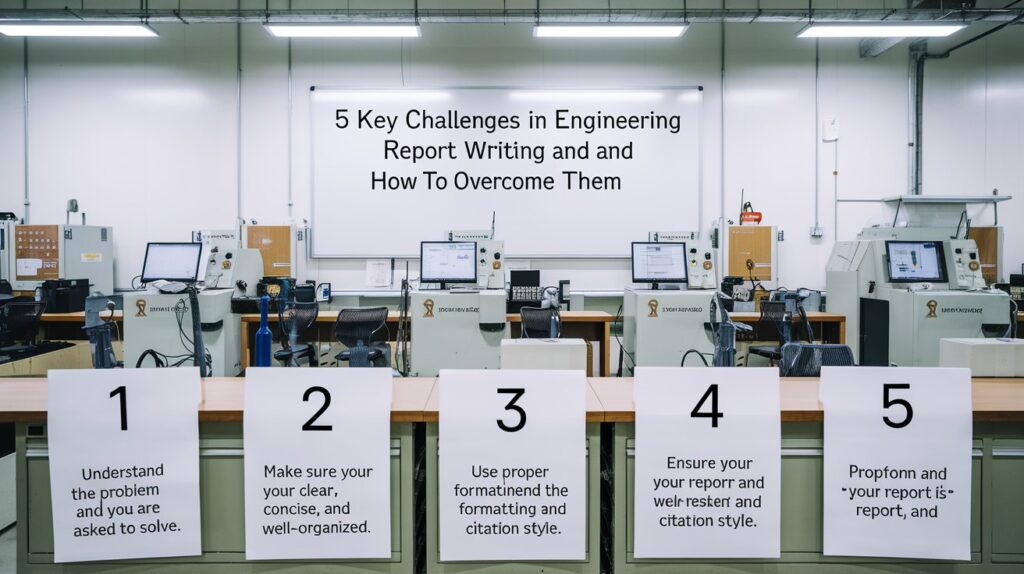Creating an engineering report requires precision, attention to detail, and a deep understanding of technical concepts. Whether you are a seasoned professional or a student, writing an accurate and well-structured report can be a daunting task. From data accuracy to maintaining clarity, the challenges in engineering report writing can often hinder productivity. This article explores five key challenges faced during the process and provides practical strategies to overcome them.

The Importance of a Well-Written Engineering Report
An engineering report is not just a document; it serves as a critical tool for communication. It bridges the gap between technical experts and decision-makers, ensuring that complex ideas are presented clearly. A poorly written engineering report can lead to misinterpretations, project delays, and even financial losses. Addressing the common challenges is essential for crafting reports that are both effective and impactful.
Challenge 1: Collecting Accurate and Relevant Data
The Problem:
One of the most significant challenges in engineering report writing is gathering accurate and relevant data. Incomplete or incorrect data can compromise the integrity of the entire report, leading to flawed conclusions and recommendations.
How to Overcome:
- Establish Clear Objectives: Define the purpose and scope of your engineering report to guide your data collection process.
- Use Reliable Sources: Ensure all data is sourced from credible and verified references.
- Cross-Verify Information: Validate your data by comparing it with multiple sources to ensure accuracy.
- Leverage Technology: Use tools like CAD software, simulation tools, and data analysis software to streamline data collection.
Challenge 2: Structuring the Report Effectively
The Problem:
An ill-structured engineering report can confuse readers and dilute the impact of its findings. Organizing technical information into a coherent format is a challenge many writers face.
How to Overcome:
- Follow Standard Formats: Adhere to the specific format or guidelines required for the report.
- Use Headings and Subheadings: Break your content into smaller sections using clear headings and subheadings.
- Include Visuals: Incorporate diagrams, charts, and tables to support textual information.
- Prepare an Outline: Draft an outline before writing to ensure a logical flow of information.
Challenge 3: Maintaining Clarity and Simplicity
The Problem:
Engineering reports often involve complex technical jargon, which can make them difficult to understand for non-specialists. Striking the right balance between technical accuracy and simplicity is a common hurdle.
How to Overcome:
- Know Your Audience: Tailor your language and content to suit the target readers, whether they are engineers, managers, or clients.
- Avoid Unnecessary Jargon: Use technical terms only when necessary and provide explanations where needed.
- Simplify Sentences: Break down complex ideas into concise and clear statements.
- Use Examples: Provide practical examples to make abstract concepts more relatable.
Challenge 4: Ensuring Consistency and Accuracy
The Problem:
Consistency in formatting, units of measurement, and terminologies is crucial for a professional engineering report. Errors in these areas can reduce the report’s credibility.
How to Overcome:
- Create a Style Guide: Develop a style guide for the report to maintain consistency in font, spacing, and citation styles.
- Double-Check Calculations: Review all calculations and ensure consistency in units of measurement.
- Proofread Thoroughly: Use proofreading tools or professional services to catch errors in grammar, formatting, and content.
- Involve Peer Review: Have a colleague or team member review the report for additional insights and error detection.
Challenge 5: Managing Time Constraints
The Problem:
Engineering report writing can be time-intensive, especially when juggling other responsibilities. Tight deadlines can compromise the quality of the final output.
How to Overcome:
- Set Milestones: Break the project into smaller tasks and set achievable deadlines for each.
- Prioritize Tasks: Focus on critical sections first to ensure the most important information is addressed.
- Automate Processes: Use templates and software tools to speed up repetitive tasks like formatting and data visualization.
- Allocate Resources Wisely: Delegate tasks where possible to team members with the appropriate expertise.
Conclusion
Writing an effective engineering report requires a blend of technical skills, organizational abilities, and attention to detail. By addressing these five common challenges—data accuracy, structuring, clarity, consistency, and time management—you can enhance the quality of your reports and ensure they meet the highest standards. Whether you’re preparing an academic submission or a professional document, overcoming these hurdles will set you on the path to success.
At Pen2Paper, we specialize in delivering professionally crafted engineering reports tailored to your unique needs. If you’re looking for expert assistance, visit pen2paper.in and let us help you create reports that make an impact.
